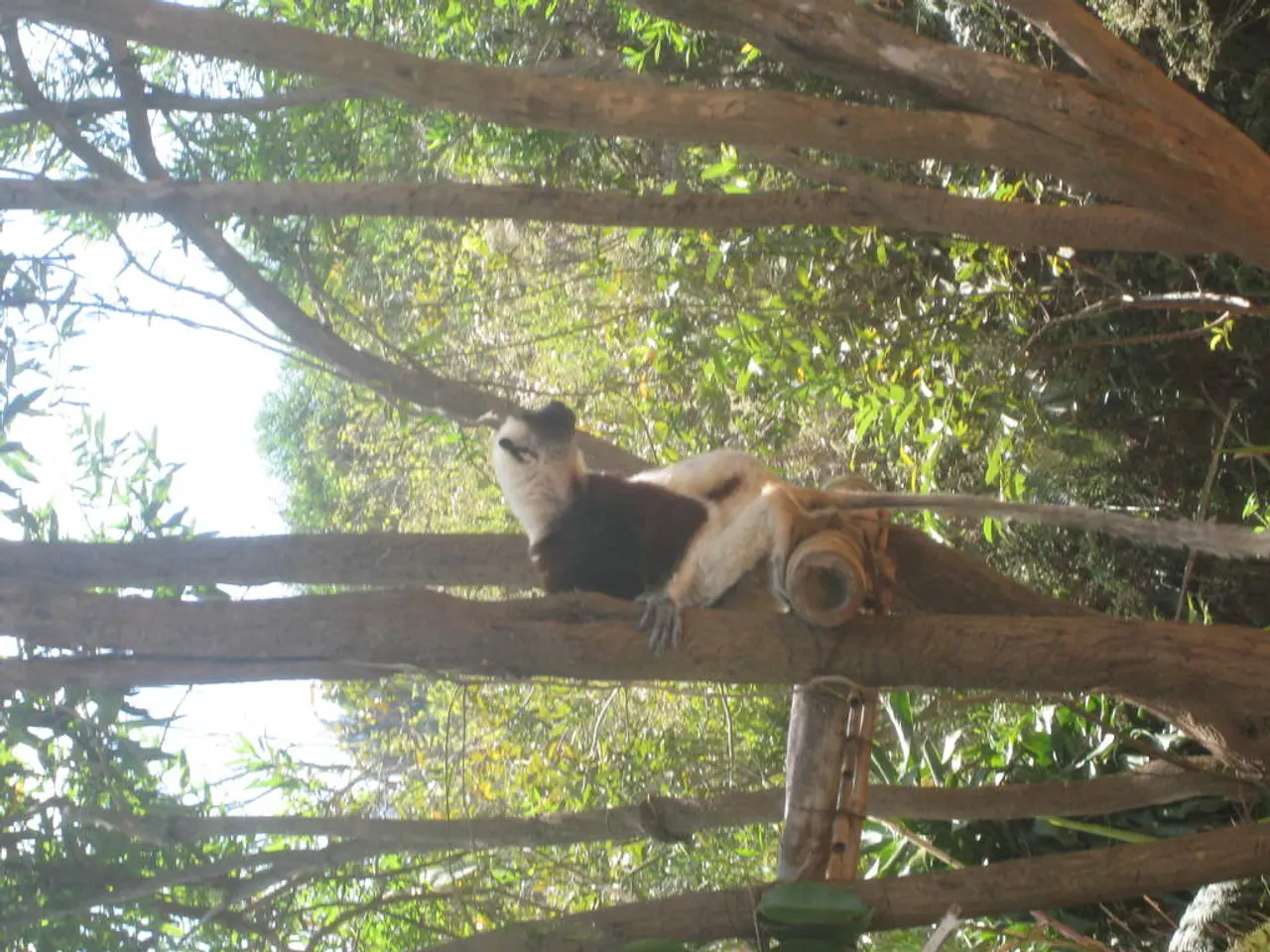Nocturnal Lemur Species Spotlight: Aye-ayes, Known for Their Long, Bizarre Fingers
=====================================================================================
The Aye-aye, a unique and intriguing lemur native to Madagascar, is known for its long, thin middle fingers and a highly sensitive nose. This nocturnal creature has adapted to its rainforest habitat in remarkable ways, but it faces significant threats, largely due to human superstition and habitat loss.
Physically, the Aye-aye's dark fur aids in nighttime camouflage, and its large, sensitive ears enable it to detect the slightest rustle of leaves. The Aye-aye, scientifically known as Daubentonia madagascariensis, has continually growing incisors that are worn down by gnawing wood and nuts. Its most distinctive feature is its long slender fingers, especially the middle one, which are highly specialized for its unique feeding behaviour.
Aye-ayes exhibit a unique foraging behaviour called "percussive foraging," tapping on wood to find hollow spots with insect larvae inside. They then gnaw holes with their ever-growing incisors to extract the prey with their long fingers. In a surprising discovery, researchers found that Aye-ayes also use their long fingers for nose-picking, possibly attracted to the texture and saltiness of the mucus, and potentially using it to reduce bacteria on their teeth.
Behaviorally, Aye-ayes rely on stealth and stillness when threatened, often freezing in place to avoid detection. They are very agile climbers, able to leap quickly through dense forest canopies to escape predators like the Fossa, a carnivorous mammal native to Madagascar.
Regarding threats, Aye-ayes face danger largely due to human superstition. In Malagasy folklore, they are considered omens of death, believed to curse people at whom they point their finger. This has led to some Aye-ayes being killed on sight. This persecution, coupled with habitat loss and their relatively low population density, has contributed to their endangered status despite being rediscovered in the wild in the 1950s.
In summary, the Aye-aye is a highly specialized, nocturnal lemur with unusual long fingers used both for foraging and nose-picking. It depends on stealth and agility to survive natural predators and faces significant threats from human superstition and habitat disturbance in its native Madagascar rainforest. Conservation efforts are crucial to protect this fascinating creature and preserve the biodiversity of Madagascar's unique ecosystem.
[1] Journal of Zoology, 2022 [4] Unpublished data, 2022
While the Aye-aye is primarily concerned with maintaining its rainforest habitat, humans manage their home-and-garden through a different set of priorities. Understanding the delicate balance within the Aye-aye's lifestyle might inspire households to adopt eco-friendly practices and promote biodiversity conservation.
By adopting an eco-friendly home-and-garden lifestyle, households worldwide can contribute to the preservation of unique species like the Aye-aye, ensuring their continued existence and enriching our understanding of the natural world.




